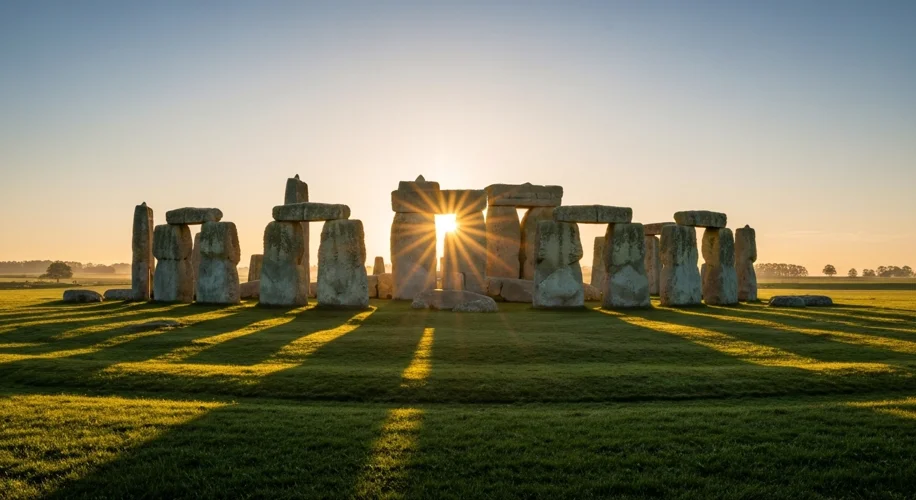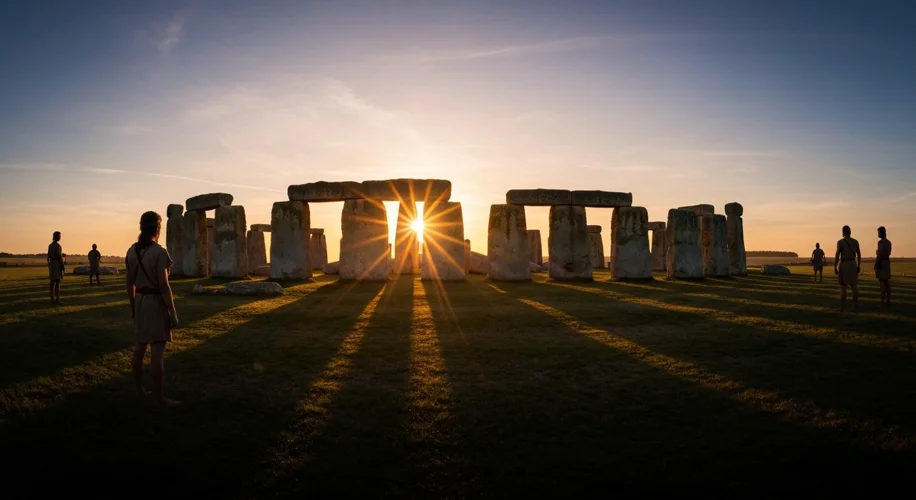Now, imagine: a vast, windswept plain in Wiltshire, England, nearly 5,000 years ago. The air hangs heavy with the scent of damp earth and woodsmoke. A monumental task is underway, one that would defy the understanding of generations to come. This is the story of Stonehenge, a prehistoric marvel whose construction and purpose remain shrouded in a captivating mystery.
Long before written records, the Neolithic people of Britain embarked on an ambitious project that would leave an indelible mark on the landscape. Their culture, though elusive in its details, was deeply connected to the rhythms of the natural world. They were farmers, toolmakers, and astronomers, their lives dictated by the changing seasons and the movements of the celestial bodies. Stonehenge was not born from a single impulse but evolved over millennia, with construction phases stretching from around 3000 BCE to 1600 BCE.
This was an era when colossal stones, some weighing as much as 40 tons, were moved across vast distances. The bluestones, smaller but no less significant, were transported from the Preseli Hills in Wales, a journey of over 150 miles. Imagine the sheer human effort, the ingenuity, and the unwavering determination required to achieve this feat without the aid of modern machinery. Tools made of stone, bone, and wood were their only companions in this epic undertaking.
Who were the architects of this colossal undertaking? While no definitive historical figures are associated with its creation, the evidence points to a highly organized society with a sophisticated understanding of engineering and astronomy. The most compelling theory suggests that Stonehenge was a sacred site, a place of ritual, ceremony, and perhaps even healing. Its alignment with the solstices—the longest and shortest days of the year—is undeniable. On the summer solstice, the rising sun aligns perfectly with the Heel Stone, a solitary monolith standing guard outside the main circle. Little did they know that this precise alignment would serve as a celestial calendar and a focal point for rituals for thousands of years.

The construction itself was a masterpiece of prehistoric engineering. The massive sarsen stones, quarried from Marlborough Downs, were erected in a circle, capped by lintels forming a continuous ring. Within this outer circle, the bluestones were arranged in various configurations, their origins hinting at a spiritual or symbolic significance tied to their distant homeland. The precision with which these stones were quarried, shaped, transported, and erected speaks volumes about the skills and knowledge of the people who built it.
The purpose of Stonehenge, however, remains the subject of intense debate and fascination. Was it a temple dedicated to the sun? An astronomical observatory? A burial ground? Or a combination of all these? Archaeological findings have revealed human remains, cremated and otherwise, interred within the site, suggesting a role as a place of reverence for ancestors. The intricate carvings on some of the stones, though weathered by time, add another layer to the enigma, hinting at a complex symbolic language.
The impact of Stonehenge on subsequent cultures is immeasurable. It has inspired awe and wonder for centuries, drawing pilgrims, scholars, and tourists alike. Its enduring presence serves as a powerful reminder of the ingenuity and spiritual depth of our ancient ancestors. The mystery of its construction and purpose continues to fuel our imagination, inviting us to ponder the profound connection between humanity, the earth, and the cosmos.
What truly resonates is the sheer human effort and the collective vision that brought Stonehenge into being. It’s a testament to a society that, despite its seemingly primitive tools, possessed a profound understanding of the universe and a deep spiritual connection to their world. Stonehenge isn’t just a collection of stones; it’s a whisper from the past, a monumental riddle etched into the English landscape, waiting for us to decipher its secrets.

